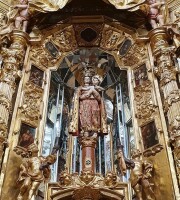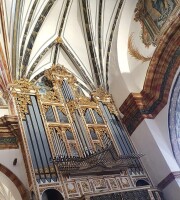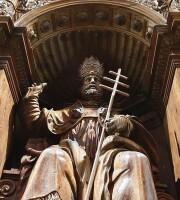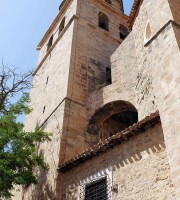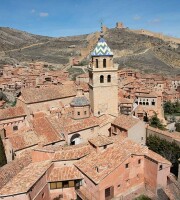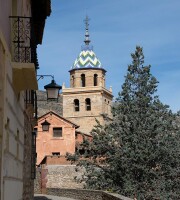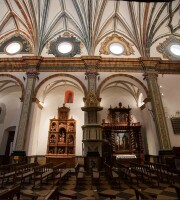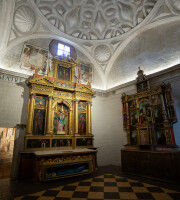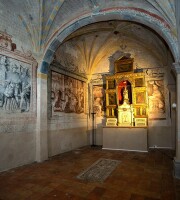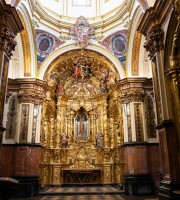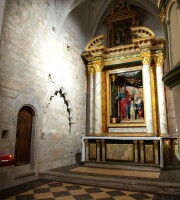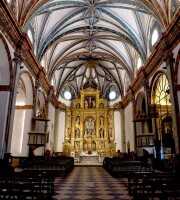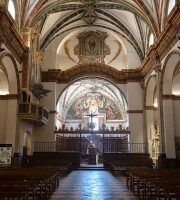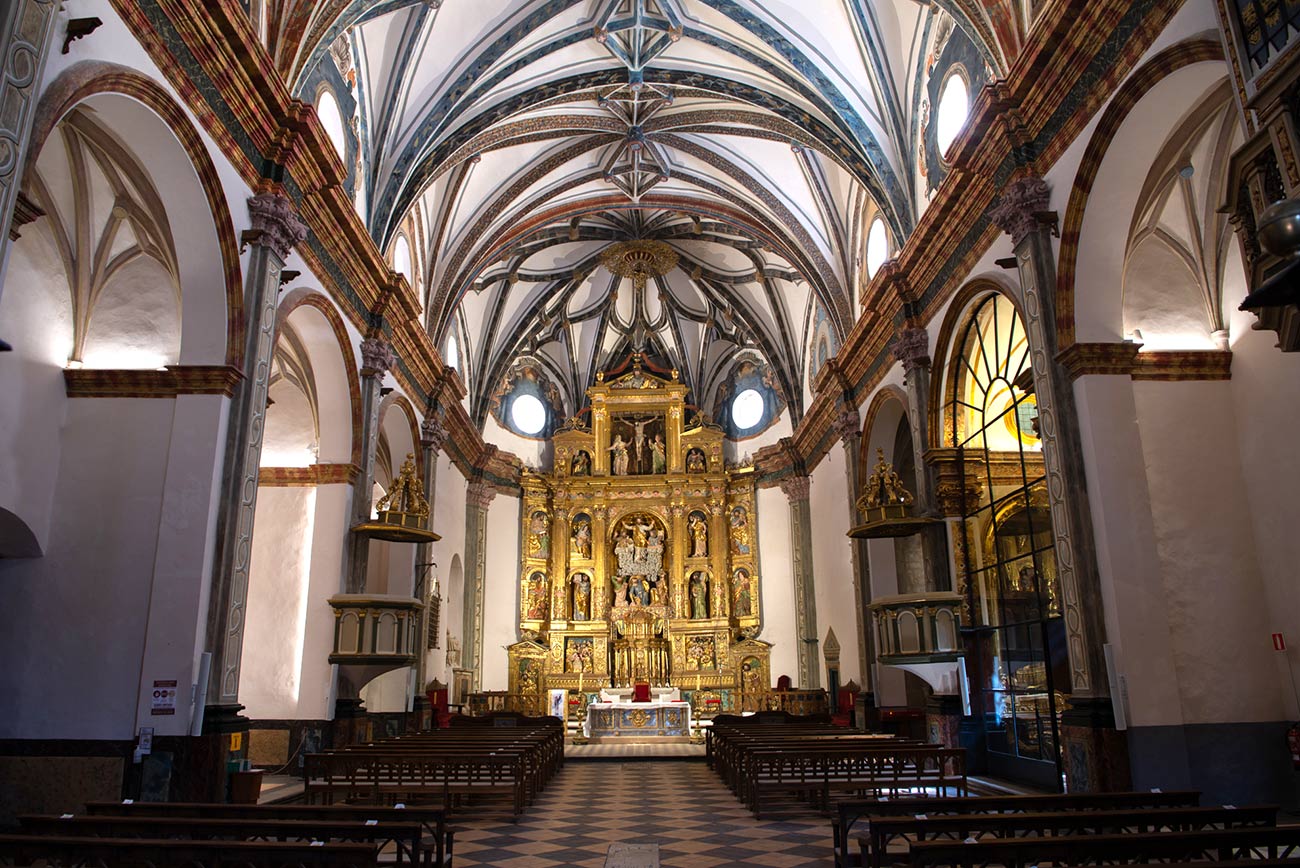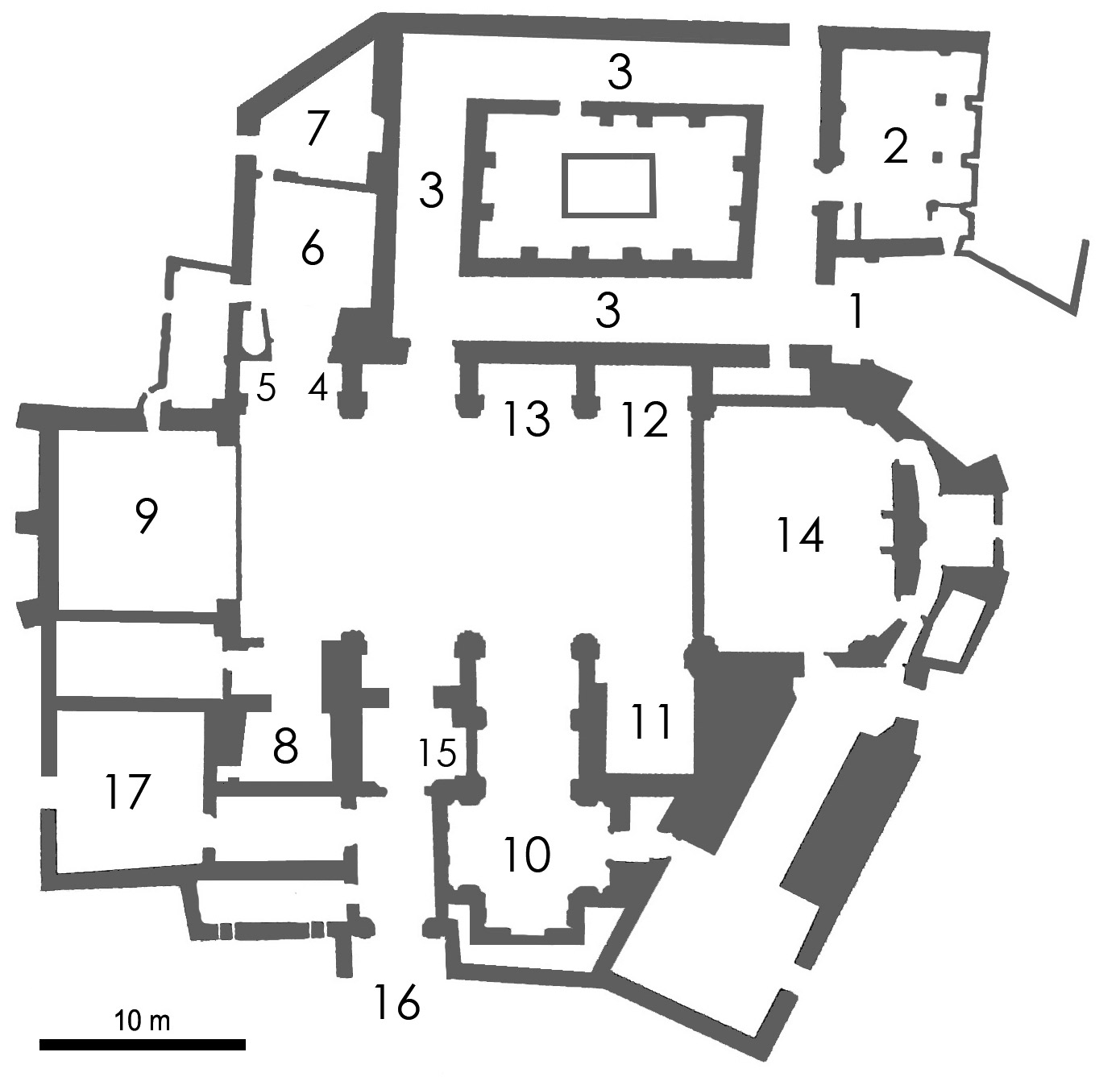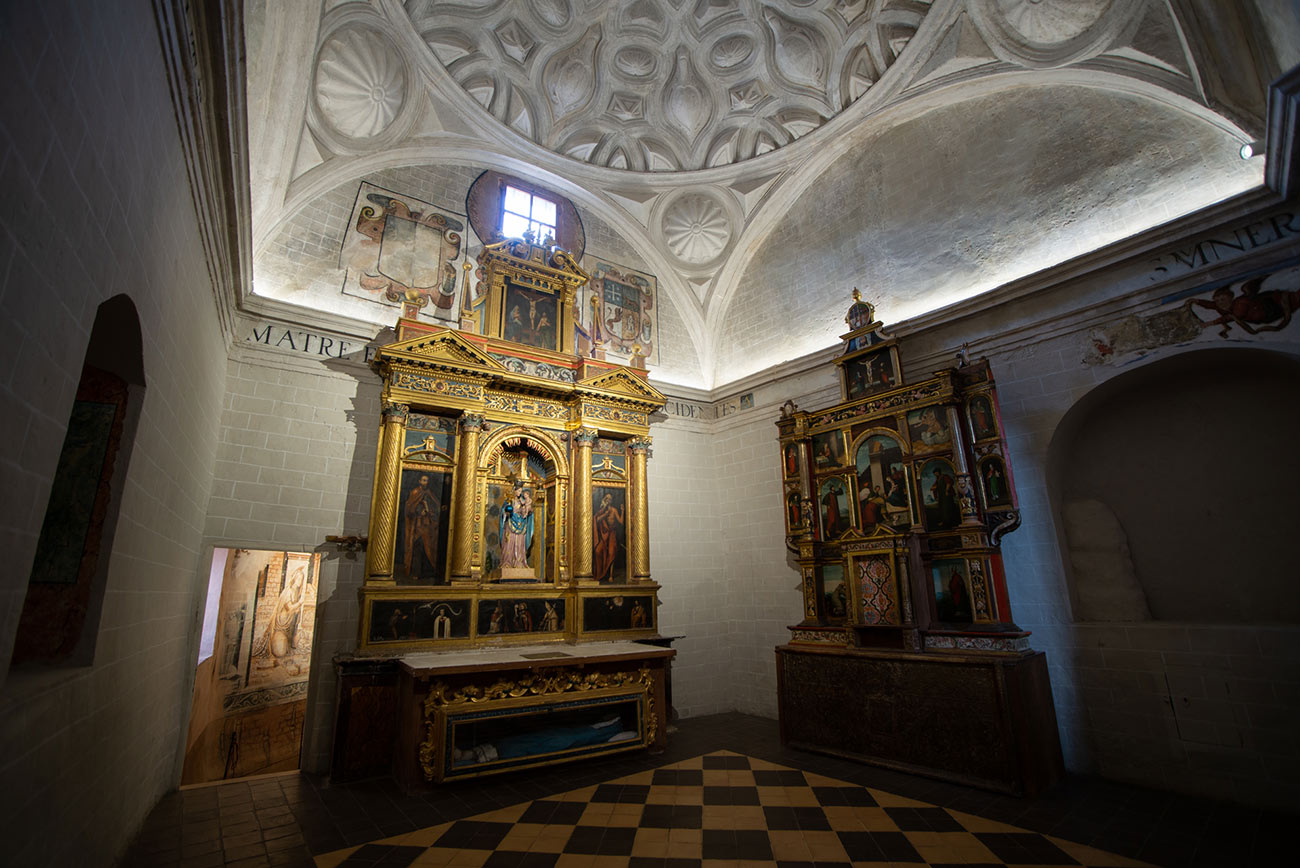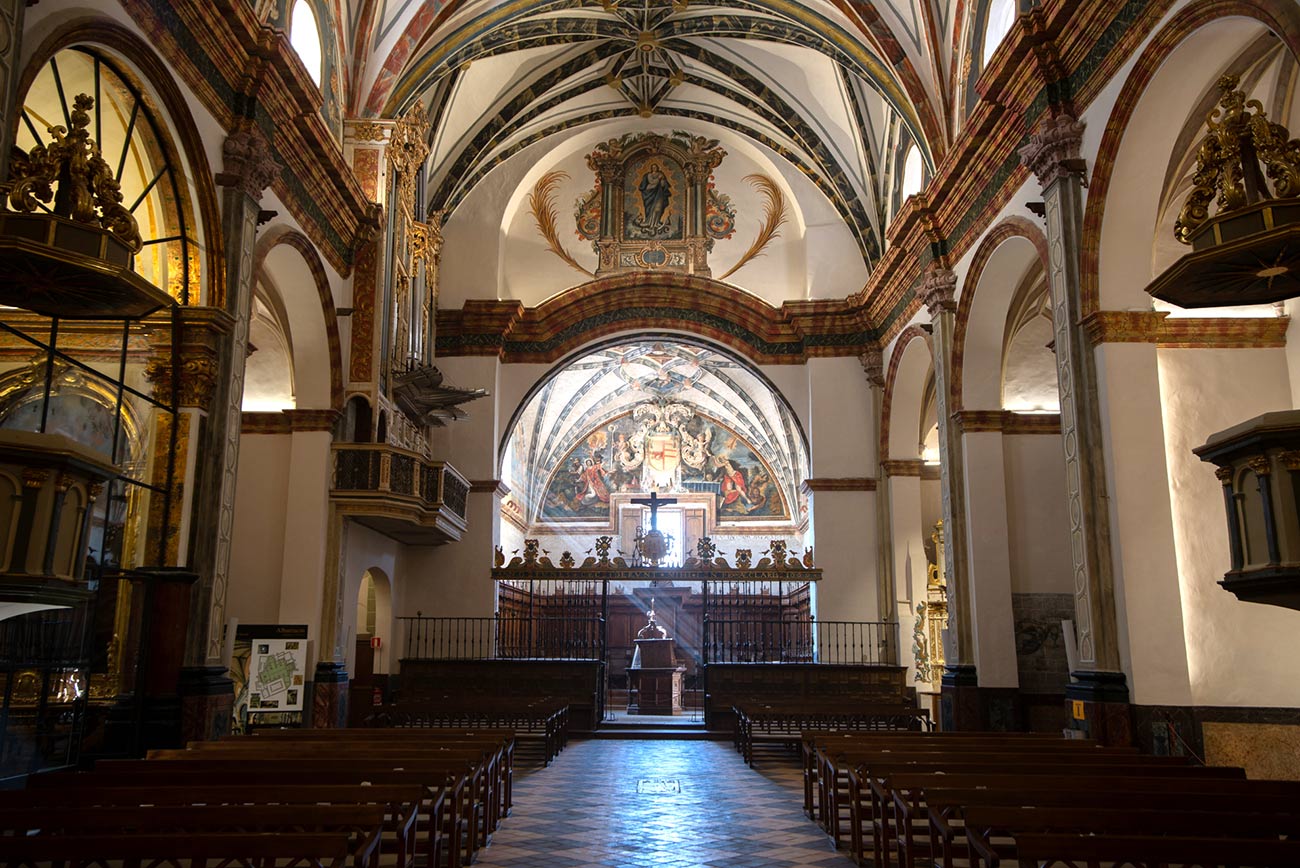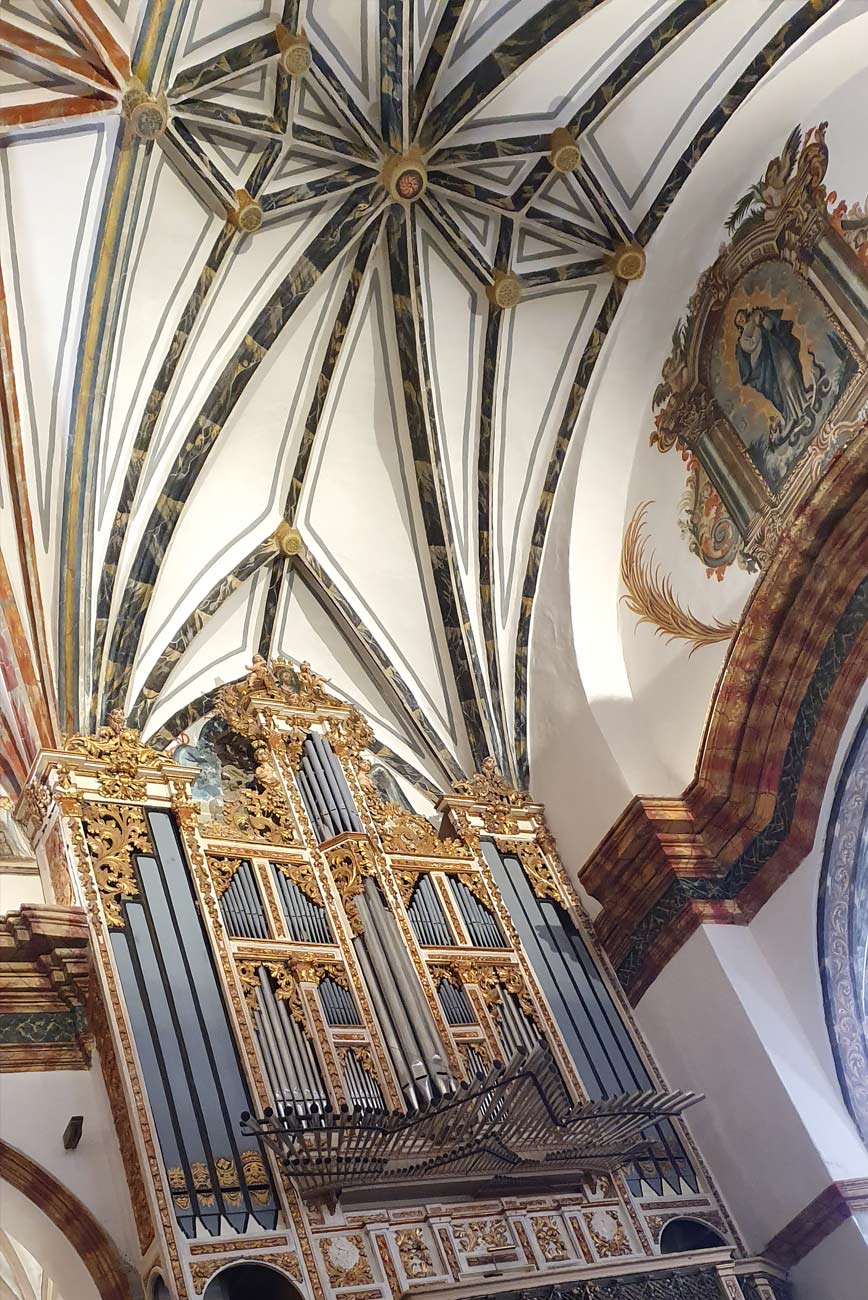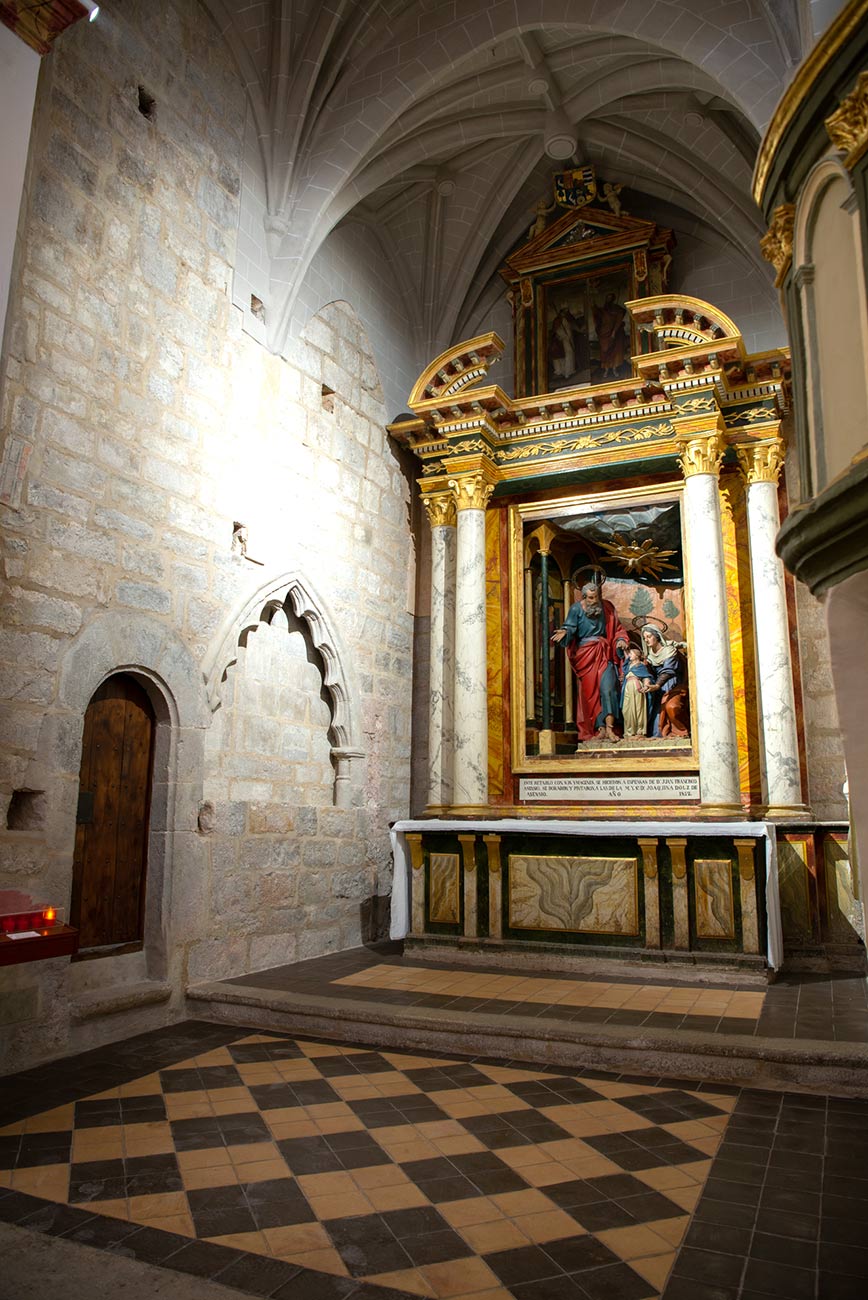Albarracín Cathedral
Albarracín has had a Cathedral-Church since 1172, the date on which the diocese was created. This ecclesiastical monument is the most emblematic building in the city. This first Cathedral was most probably erected on the site of the original aljama mosque (or main mosque) and was none other than the church of Santa María that the Christians moved to the higher part of the town in the 13th century (16 August 1200), the date on which the second Cathedral was inaugurated, taking advantage of the remains of the previous one, and which must have had a single-body tower to the flying buttress of the central nave. Construction was started on the third and current Cathedral –El Salvador – by the bishops Gilabert Martín and Gaspar Jofre de Borja (between 1530-1532) and the choir was built in 1538 (requiring robust buttresses) and the expansion of the tower, due to economic difficulties, was built in two phases, finally completed in 1598. Also worthy of mention is that some Roman ruins have been preserved, embedded at the base of the tower.
The stairs in the main entrance (number 1 on the Cathedral floor plan) are of recent construction. At the top of the staircase was the portegado or portico of the 1200 Cathedral, where public events were held. Before going inside the temple, notice the corbels with angels holding musical elements: flutes, musical scores… which are Gothic remains from the primitive cathedral that now adorn the apse.
As soon as you enter, through the Cloister door and to our right, is the Parroquieta (little parish church) or chapel of La Inmaculada Concepción (number 2). It has a simple Plateresque entrance covered with star-shaped vaults on its three sections. The image of the saint, which is in the centre, is from the 12th century. The small side nave, which is covered with a half-barrel vault with lunettes, and the choir are from the 13th century.
Leaving the chapel we find a closed Cloister (number 3), of an almost irritating simplicity, that more than elegance reflects poverty. It is decorated with two 12th-century altarpieces: that of the Holy Family and another dedicated to the Virgin and the Child. In the cloister we can also see the Stations of the Cross on canvas, which has a certain artistic interest and curiously, ten and six stations.
We will now proceed to the main and single nave, to begin a tour of the chapels. We will start from our right and the first one we find is the chapel of Santa Catalina (number 4). This chapel was very important because Capitulary acts took place there. Today it has lost the status of chapel.
In front of it we can see the chapel of the Transfijo (transfiguration) (number 5). Here, the Fraternity of the Transfiguration was founded in 1558, which only admitted priests who had benefices or chaplaincies in the Cathedral and who also resided in Albarracín. The Bishop to the chaplains were members of the fraternity.
On the right is the chapel of the Ánimas (Souls) (number 6). From ancient times it was called the chapel of the Novella and in 1582 Pope Gregory XIII issued a Bull dedicating the central altar to Souls. The layout of the chapel and altars changed in the 16th century and what today is the chapel and sacristy is divided into three chapels, with the Souls chapel located at the door that had opened into the cloister. With the last restoration by the Fundación Santa Maria de Albarracín, this chapel has recovered its original decoration and all its splendour, as well as the adjoining sacristy, which was one of the benefices of the Cathedral (number 7).
Leaving here, we find ourselves opposite the current Baptistery (number 8). Formerly, the chapel of Santo Cristo was in its place. Today, and after its restoration, the original decoration has been recovered to its full splendour. Additionally, and of great importance, we find the Baroque organ above it.
Next to the organ is the Choir (number 9). It began to be reformed in 1538 and in 1669 the beech wood seating and panels were already installed. The Atlantean heads on the seating of the beneficed clerics are extremely interesting.
Continuing our tour of the Cathedral, we will now visit the chapel of the Virgen del Pilar (number 10), easily recognisable by the unsightly glass that was recently placed in it. Without doubt the most interesting feature is its high altar, which for Santiago Sebastian is “…inspired by the altarpiece of La Inmaculada, the one in Teruel Cathedral, and by the main altar of San Miguel, in the same city.” The image of the saint is in the centre, in a deep niche, and dates back to the 17th century. At present and after the last phase of restoration of the Cathedral, carried out by the Fundación Santa Maria de Albarracín, we can observe the original Gothic decoration, which makes this chapel the best example of what the second Cathedral would have looked like.
Returning back to the central nave and continuing our journey through the side of the Epistle – that is to say, to our right – we will find the chapel of Santa Ana (number 11 and the first one to the right of the main altar). The importance of this chapel lies in the fact that during the 15th-16th centuries Capitulary acts were held here and since the 17th century to present day, the Holy Week Monument has been placed there. This silver monument can be seen today in the Diocesan Museum
Continuing the visit, and in front of us, is the chapel of San Antonio Abad y San Sebastián (number 12), which is the first one on the Epistle side after the main chapel. In this case, Santiago Sebastian documented that the the altarpiece that we can see today was made in the 17th century; furthermore, he qualifies it as Baroque of little value and roughly carved.
Next, and on the Epistle side, is the chapel of Santa María Magdalena (number 13). At the end of the last century, Juan Comes y Vidal, Apostolic Administrator of Albarracín, ordered the transfer of the San Pedro altarpiece from the church of Santa María to this chapel of La Magdalena and the altarpiece from here to Santa María. The San Pedro altarpiece belonged to the fraternity of the same name, which was the oldest and richest in the church of Santa María. We recommend visiting the San Pedro altar because it is the best of all the Albarracín churches in its style, although it is not polychromed.
We will now visit the main chapel and the sacristy (number 14). The new cathedral sacristy with pentagonal apse and main chapel was completed in 1533, paid for by the City, which also covered the cost of the painting, skylights and mouldings. The sons of Pierres Vedel claimed that among their father’s other heroic works was the Albarracín Cathedral. Once the roof was completed, he proceeded to search for a master – Cosme Damian Bas – to make the altarpiece. The poverty of the Diocese of Albarracín and its deterioration after separating from Segorbe, meant that the altarpiece could not be finished until the time of Bishop Friar Pedro Tris, who commissioned master Rillo to gild it in 1680, at his own expense. In 1681 the work had already been completed and the Chapter, grateful to the gilder and Bishop Tris, ordered that their crests be placed on both sides of the altar.
Leaving towards Plaza de la Seo (by the door opposite the one you entered through), you can see the chapel of San Juan Bautista (number 15) and the altar of San Vicente, next to the holy water font. The chapel consists of an 18th century altarpiece that represents San Juan in the central panel of the middle body and on his two sides Santiago and San Pedro. Opposite is the altar of San Vicente, which was placed here when his own chapel disappeared with the enlargement of the Ánimas chapel in the 17th century.
Finally, and to conclude our visit to the Cathedral, you will pass two wooden doors that came from the gate, which are of very good quality (18th century), to find yourselves in front of the exit to Plaza de la Seo square (number 16), and to the right of the entrance to the new Chapter hall built in 1711-1712 (number 17).
